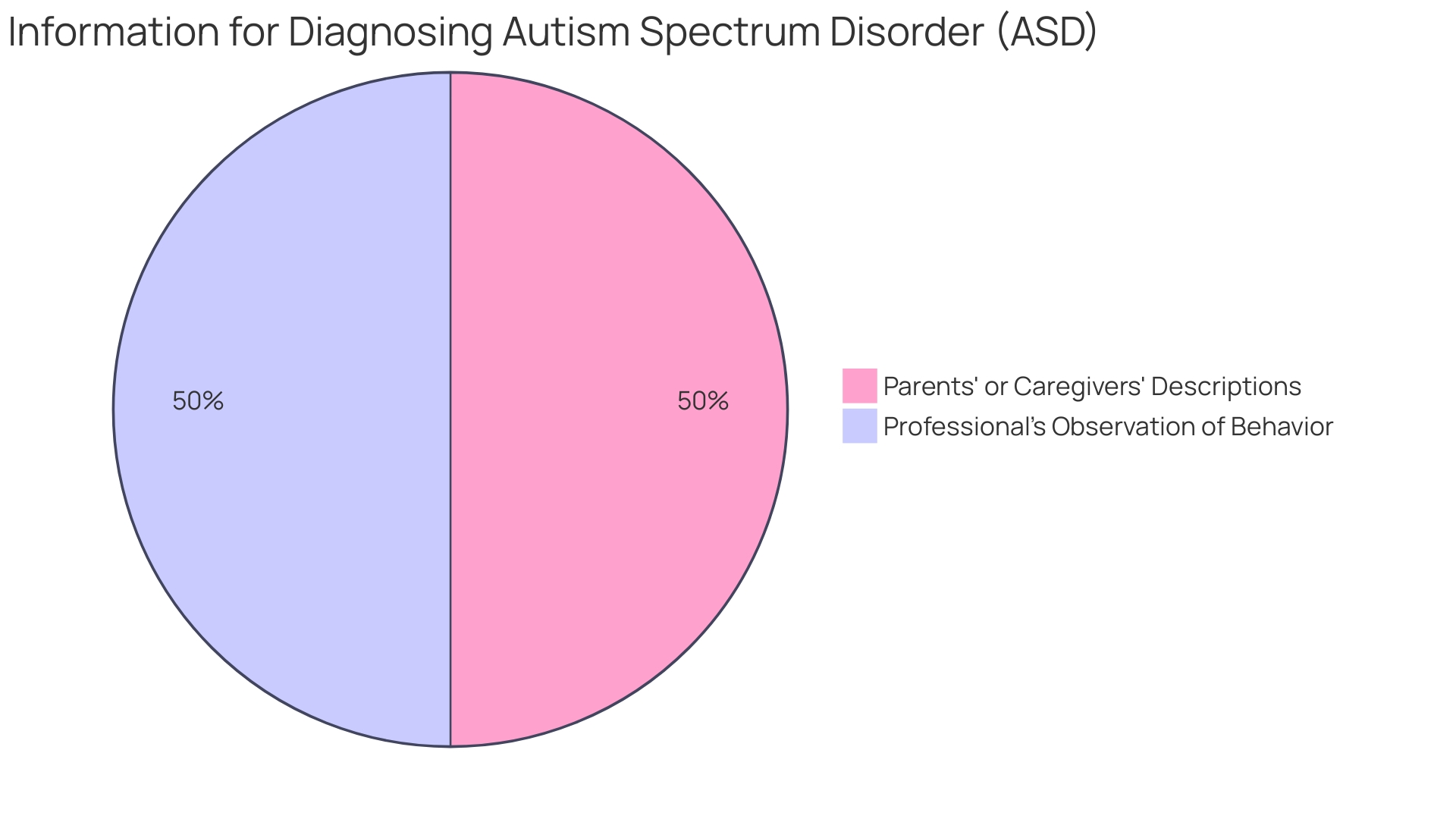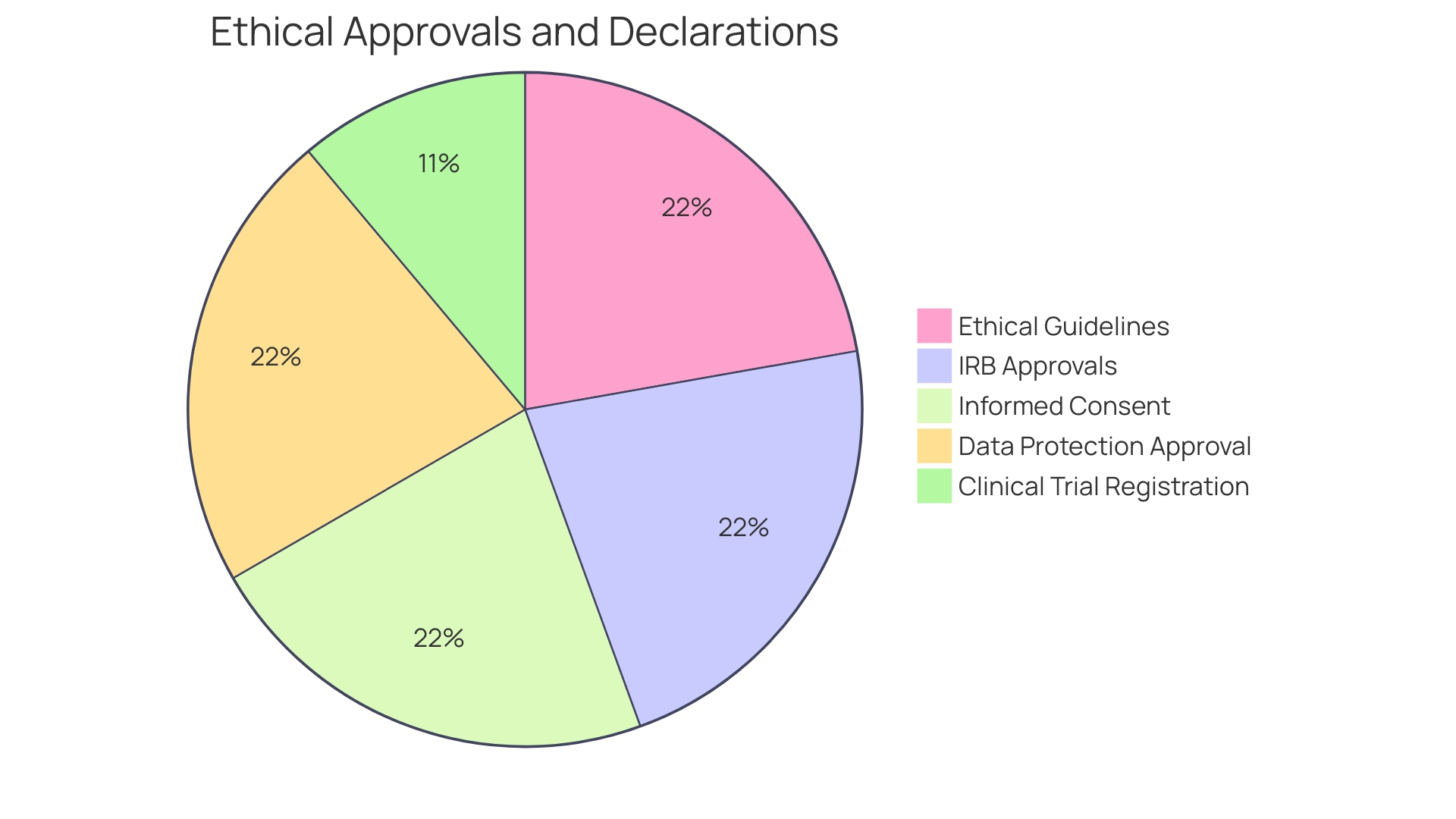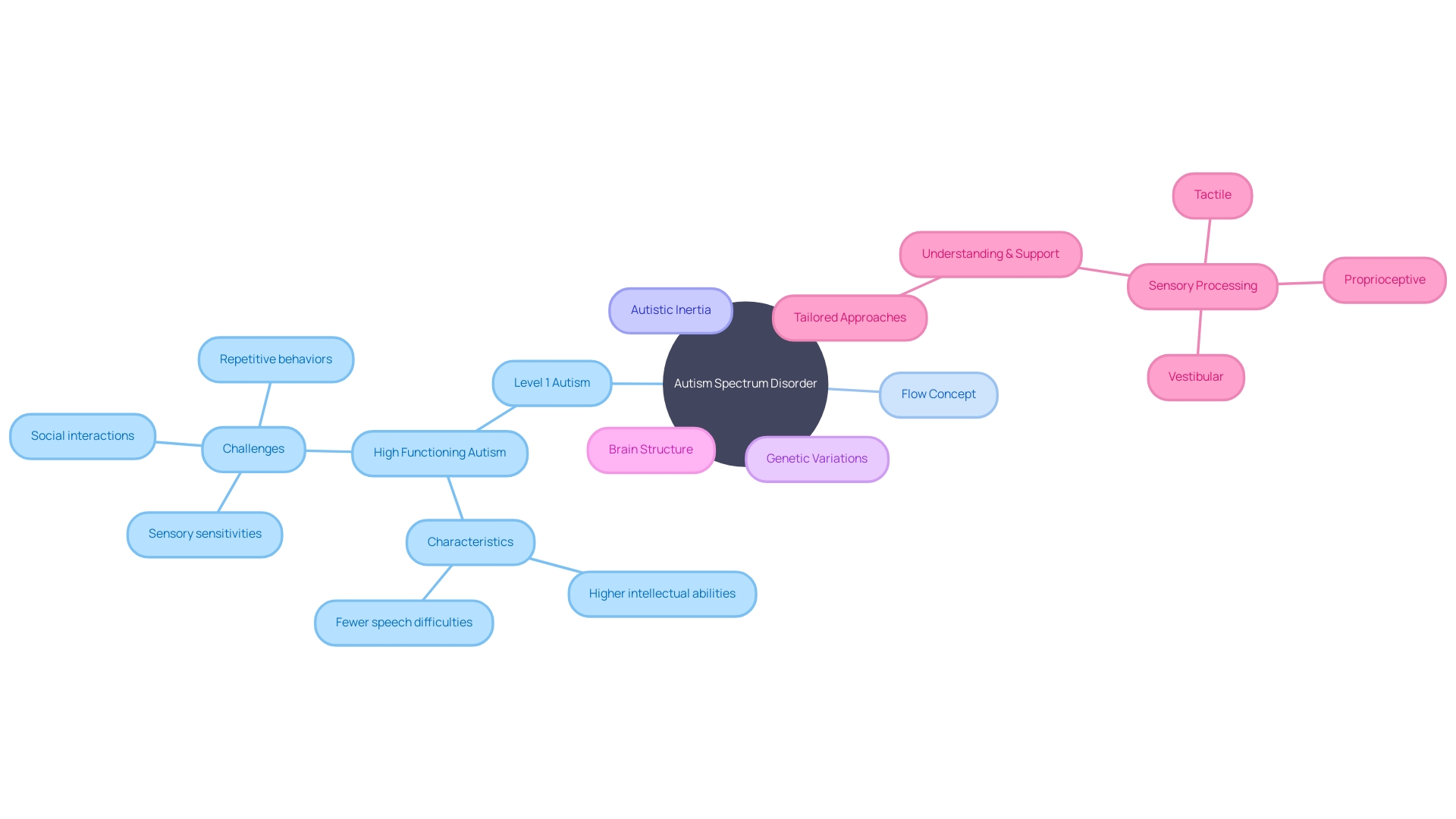Introduction
Autism Spectrum Disorder (ASD) encompasses a wide range of conditions that affect behavior, social skills, and communication in individuals. Within this spectrum, Level 1 Autism, also known as high-functioning autism, presents its own set of challenges and strengths. While individuals with Level 1 Autism may possess strong language skills and cognitive abilities, they often struggle with social communication and interactions.
This article explores the core characteristics of Level 1 Autism, including restricted interests and repetitive behaviors, sensory sensitivities, and social communication challenges. It also highlights the importance of tailored support strategies and early intervention to empower individuals with autism and ensure their well-being. By understanding and embracing the unique perspectives and skills of individuals with autism, we can foster a more inclusive and supportive society for all.
Definition and Classification of Level 1 Autism
Autism Spectrum Disorder (ASD) presents a wide umbrella of conditions that manifest uniquely in each individual, affecting their behavior, social skills, and communication. At its mildest level, often referred to as Level 1 Autism, individuals may demonstrate strong language skills and cognitive abilities, yet face substantial hurdles in social communication and interactions. Despite these challenges, people with Level 1 Autism might engage in repetitive behaviors and have difficulties creating and sustaining relationships.
A poignant case study in the Journal of Personalized Medicine explores the impact of environmental and lifestyle adjustments on ASD, particularly focusing on dizygotic twins with 'level 3 severity' autism, which requires significant support. The study illuminates how personalized, non-pharmacological interventions can markedly ameliorate the number and intensity of ASD symptoms. This underscores the diversity of autism and the customized approaches required to support individuals across the spectrum.
The term 'high functioning autism' is unofficially used to distinguish individuals with milder symptoms and higher intellectual capabilities. While these individuals may excel academically and have less pronounced communication difficulties, they often experience considerable challenges in social interactions, sensitivity to sensory stimuli, and may exhibit repetitive behaviors. These hurdles highlight the necessity for a nuanced understanding of ASD and the importance of tailored support strategies.
Autism's impact on individuals is lifelong and varies greatly, making education on ASD crucial for those who interact with people on the spectrum, including friends, teachers, and colleagues. Acknowledging the bidirectional nature of communication challenges–often referred to as 'the double empathy problem'–is a step towards fostering mutual understanding between autistic individuals and the neurotypical population.
Statistics reflect that early intervention and support are vital for enhancing the development and functioning of individuals with ASD. In Australia, the National Disability Insurance Scheme (NDIS) plays a crucial role in providing personalized support plans, including early intervention for children with autism. These measures aim to empower individuals with autism to lead productive and fulfilling lives, acknowledging their unique experiences and the dedication of their families and caregivers.

Core Characteristics of Level 1 Autism
Level 1 Autism, also referred to as high-functioning autism, encompasses unique challenges and strengths. Individuals with this form of autism often possess average to above-average intellectual abilities and may not face as many language and communication difficulties as others on the spectrum. Nevertheless, they commonly experience significant difficulties in social interaction, which can include understanding non-verbal cues, initiating conversations, and developing friendships.
Restricted interests may lead to an intense focus on specific subjects, while repetitive behaviors can manifest as a need for routine or repetitive movements.
Sensory sensitivities are also prevalent, where certain sounds, lights, or textures can be overwhelming. These core characteristics vary greatly among individuals, which makes personal experiences with autism as diverse as the people themselves. For instance, Haley Moss, who was diagnosed with autism at a young age, leveraged her affinity for reading and writing into a successful career in law, exemplifying how individuals with autism can thrive in professional environments.
Recent advances in autism research underscore the importance of tailored support. A study from the Karolinska Institutet has developed the 'AutMedAI' machine-learning model, which can identify autism in children under two years old with about 80% accuracy, aiming to provide early and effective interventions. Moreover, the neurodiversity movement is gaining momentum within the private sector, as seen with the National Geospatial-Intelligence Agency's initiative to hire autistic individuals, recognizing the value they bring to the workforce.
Understanding Level 1 Autism is not only about acknowledging the challenges but also embracing the unique perspectives and skills that individuals with autism contribute to society.

Social Communication Challenges
Understanding and navigating social interactions can be daunting for individuals on the autism spectrum, particularly for those with Level 1 Autism, previously known as Asperger's Syndrome. Social cues such as gestures and facial expressions, which form the unspoken dialogue of interaction, can often be misread or overlooked by individuals with Level 1 Autism. Initiating and maintaining conversations, grasping the layers of meaning in sarcasm or idioms, and adhering to social norms can be equally challenging.
Recent advances in technology have provided alternative communication tools for those who find verbal communication difficult. An example of this was when Mr. Harris's son used a tablet to communicate, leading to the creation of picture boards in Peterborough, enhancing nonverbal communication for many. Similarly, Jordyn Zimmerman, a non-verbal autistic educator, utilizes an iPad application to express herself, demonstrating the transformative impact technology can have.
Social learning and cognition in autism are areas of active research, with studies showing that autistic individuals often process social information differently. Despite this, they can still find enjoyment and benefit from social interactions, especially in online educational settings where social cues can be tailored to their learning process. This underscores the importance of inclusive education and support systems that cater to the unique learning needs of autistic individuals.
The experiences of autistic individuals are diverse, with some using coping strategies to align with societal expectations. This adaptation, often referred to as 'compensation,' reveals the resilience and adaptability within the autism community. For those with high functioning autism, there can be a higher intellectual ability and fewer speech impairments, but social challenges and sensory sensitivities persist, highlighting the spectrum nature of autism.
Research into the adult lives of individuals with autism is still in its infancy, with much to learn about the experiences and needs of this population as they age. What is clear, however, is that with the right support and understanding, autistic individuals can lead fulfilling lives, contributing uniquely to society.
Restricted Interests and Repetitive Behaviors
Individuals with Level 1 Autism Spectrum Disorder often display a strong affinity for specific topics or objects, alongside a tendency to perform repetitive movements or actions—like hand-flapping or rocking. This level of focused interest and repetition can serve as a form of solace, offering a sense of structure and consistency. However, these behaviors have the potential to disrupt daily activities and social engagements.
The concept of 'flow,' as described by psychologist Mihaly Csikszentmihalyi, can be related to these behaviors. In a state of flow, a person is deeply engrossed in an activity to the point of losing self-consciousness and feeling a sense of control, which mirrors the immersion that individuals with Level 1 Autism experience in their interests.
Moreover, the experience of 'Autistic inertia'—a term used within the Autistic community to describe a state where individuals remain stationary or continue an action until an external force intervenes—relates to their repetitive behaviors and difficulty in transitioning between tasks. This inertia can manifest as a struggle to initiate tasks, even when the motivation is present, resembling the consistency sought through restricted interests and repetitive behaviors.
Recent research has also underscored the biological underpinnings of autism, suggesting that genetic variations play a crucial role in the condition. Advanced techniques, such as transport-based morphometry (TBM), have revealed patterns in brain structure that correlate with genetic abnormalities associated with autism. These findings accentuate the complexity of autism and the necessity for tailored approaches in understanding and supporting individuals with the condition.

Sensory Sensitivities and Other Associated Difficulties
Autism Spectrum Disorder (ASD) presents a unique set of characteristics in each individual, including those with Level 1 Autism who often face distinct sensory sensitivities. These individuals may find themselves either overwhelmed or underwhelmed by sensory inputs like light, sounds, textures, or tastes. For instance, bright lights might be piercingly intense, or certain textures might be barely perceptible.
These sensory experiences are not just fleeting discomforts; they can profoundly influence behaviors and learning, leading to either sensory overload or sensory seeking actions.
The challenge extends to executive functions, which encompass skills such as organizing, planning, and problem-solving. The difficulties in these areas can be just as impactful as sensory sensitivities, requiring strategic accommodations to foster a supportive environment. It's through understanding the nuances of these sensory and cognitive experiences that we can offer practical strategies to aid those with ASD in various settings, from the home to educational institutions and even the workplace.
Insights into the sensory world of individuals with ASD highlight the importance of inclusive support systems. Research notes that the prevalence of sensory processing issues in autistic individuals is significant, affecting their risk perception and potential for injury. Moreover, the sensory-processing sensitivity trait has been linked to a lower quality of life in adolescents facing chronic pain.
These findings underscore the necessity for tailored interventions that address the unique sensory profiles of autistic individuals, enhancing their overall well-being and adaptive functioning.
Conclusion
Individuals with Level 1 Autism face challenges in social communication, restricted interests, repetitive behaviors, and sensory sensitivities. Tailored support and early intervention are crucial to empower them and ensure their well-being. By understanding and embracing their unique perspectives and skills, we can foster an inclusive and supportive society.
Level 1 Autism, or high-functioning autism, involves difficulties in social interaction and understanding non-verbal cues. These individuals often have intense focus on specific subjects and engage in repetitive behaviors. Sensory sensitivities, such as being overwhelmed or underwhelmed by sensory inputs, are also common.
Technology offers alternative communication tools for individuals with autism, improving their ability to express themselves. Inclusive education and support systems are vital for their development.
Understanding 'flow' and 'Autistic inertia' helps develop appropriate support strategies. Sensory sensitivities impact behaviors and learning, requiring tailored interventions.
In conclusion, by understanding and embracing the unique characteristics of Level 1 Autism, we can provide the necessary support to empower individuals with autism. Through tailored strategies and early intervention, we can create an inclusive and supportive society that values their diverse perspectives and skills.




